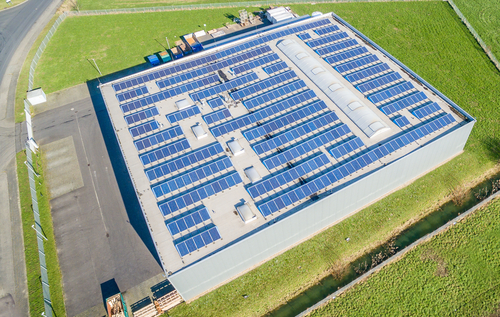Distributed energy resources (DER), including electric vehicle (EV) chargers, rooftop solar PV, and battery energy storage, are rapidly expanding in commercial buildings, according to a report from Guidehouse Insights.
The report forecasts global spending on DER in commercial buildings to reach $17.6 billion
in 2021, growing at a compound annual growth rate (CAGR) of 9.1% to hit $38.6 billion in 2030.

Asia Pacific, North America, and Europe are expected to account for most of the revenue growth. Asia Pacific will likely account for the most spending due to its far larger building stock. North American integration of commercial buildings with DER is anticipated to rise the most rapidly between the three major growth regions, with revenue jumping from $3.3 billion in 2021 to $7.8 billion in 2030 at a CAGR of 10.1%
The report says the costs of distributed resources are falling, and their effects on the power grid and utility budgets are net-positive and improving consistently. Self-consumption as an end use remains a highly important business model for DER and is quickly growing as an alternative to selling self-generated power to the grid.
In fact, the report says self-consumption captures the most value possible from distributed generation. EV charging, solar PV, and energy storage add ancillary benefits such as load shifting and significantly improve return on investment in DER adoption. The technologies needed to increase self-consumption are available and increasingly packaged as integrated rather than standalone solutions.
“Price reductions for PV modules, inverters, and balance-of-system components are expected to drive cost reductions, while installation costs will likely remain inflexible,” says Daniel Talero, research analyst with Guidehouse Insights. “Proliferation of EVs has also increased rapidly, creating the need for added distributed charging infrastructure in commercial buildings for passenger vehicles in education, office, retail, healthcare, and hospitality settings.”
According to the report, the falling cost of these technologies and their associated management software is one of the main factors supporting adoption. Such is particularly the case for rooftop solar PV costs that are falling in conjunction with sunsetting feed-in tariffs in many regions. This setup is incentivizing investment in behind-the-meter technologies that can consume a larger share of solar PV generation before reaching the grid, thereby retaining retail value.
Since market drivers and barriers vary by technology and building characteristics, the report says building owners, vendors, and utilities should consider the following when investing in commercial building DER:
- careful property characteristics evaluation,
- separate EV charging system metering,
- system sizing according to the contribution of EV charging to the building peak load,
- system promotion as direct self-consumption solutions,
- more integrated technology solution development,
- and program- and system-based planning.
The full Guidehouse Insights report, “Market Data: DER in Commercial Buildings,” is available here.
